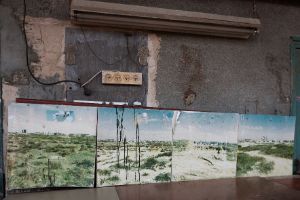
Johanna Magdalena Beyer
The German-American composer Johanna Magdalena Beyer (1888-1944) travelled an astonishing path through life. For a long time she was completely forgotten; only since 1994 has her music been increasingly rediscovered.
Little is known about the first decades of her life. Until 1915, Johanna Beyer lived mainly in her native city of Leipzig. However, her first stay in the USA, possibly lasting three years, took place during this time. When she entered the country in April 1911, she stated that her purpose was to visit relatives in New York; no further details are known. She was registered in Leipzig again from June 1914. In the following years, Johanna Beyer completed a musical education at a private institution. In November 1923, she returned to New York, where she settled permanently and lived mainly from piano and composition lessons. She returned to Germany twice more, now with an American passport following her naturalisation in 1930.
Johanna Beyer received the decisive artistic impetus while studying at the Mannes School of Music in New York. Here she was taught by the central figures of so-called "ultra-modernism" such as Ruth Crawford, Charles Seeger and Henry Cowell, who pursued an experimental, avant-garde approach. In the 1930s, Johanna Beyer created the main part of her musical oeuvre, comprising around 100 compositions, which identifies her as an important exponent of radical modernism in the USA. Her works for percussion ensemble are particularly groundbreaking. Despite her importance and her networking in avant-garde circles, she was not recognised during her lifetime. Johanna Beyer died in New York in 1944 after a long illness.
The German-American composer Johanna Beyer (1888-1944) travelled an astonishing path through life. For a long time she was completely forgotten; only since 1994 has her music been increasingly rediscovered.
Little is known about the first decades of her life. Until 1915, Johanna Beyer lived mainly in her native city of Leipzig. However, her first stay in the USA, possibly lasting three years, took place during this time. When she entered the country in April 1911, she stated that her purpose was to visit relatives in New York; no further details are known. She was registered in Leipzig again from June 1914. In the following years, Johanna Beyer completed a musical education at a private institution. In November 1923, she returned to New York, where she settled permanently and lived mainly from piano and composition lessons. She returned to Germany twice more, now with an American passport following her naturalisation in 1930.
Johanna Beyer received the decisive artistic impetus while studying at the Mannes School of Music in New York. Here she was taught by the central figures of so-called "ultra-modernism" such as Ruth Crawford, Charles Seeger and Henry Cowell, who pursued an experimental, avant-garde approach. In the 1930s, Johanna Beyer created the main part of her musical oeuvre, comprising around 100 compositions, which identifies her as an important exponent of radical modernism in the USA. Her works for percussion ensemble are particularly groundbreaking. Despite her importance and her networking in avant-garde circles, she was not recognised during her lifetime. Johanna Beyer died in New York in 1944 after a long illness.
As of: March 2024
